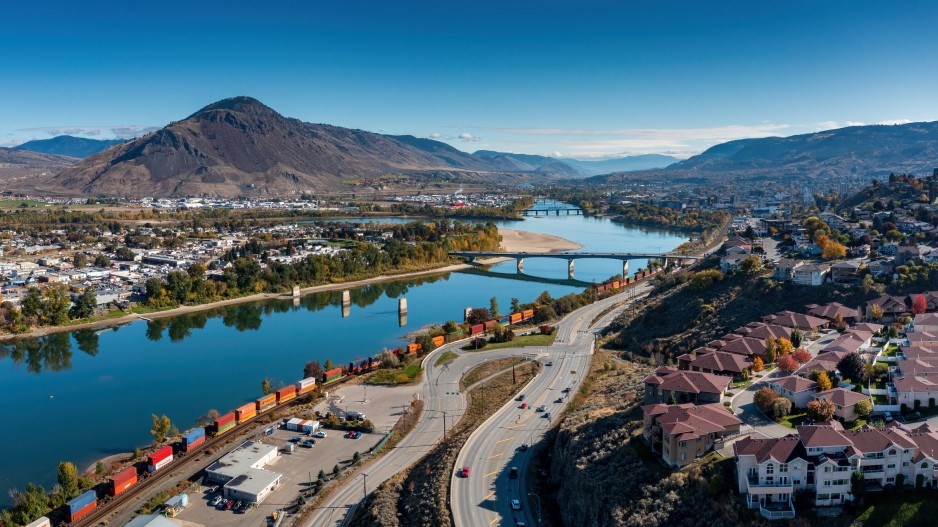Can the 15-minute city – the urban planning concept that clusters the necessities for work, life and play within a 15-minute walk or bike ride – be applied to municipalities outside of urban centres?
Within smaller, suburban areas, a new report suggests there is the potential to create 15-minute neighbourhoods.
Work from Re/Max Canada advances the notion that smaller communities can benefit from accessing daily necessities within a 15-minute walk. Released June 22, the report includes insights from experts in urban planning, climate change and engineering.
Key topics in the report focus on the need to increase housing supply in a way that emphasizes the “right kind of supply,” said Re/Max in a press release on the report.
“The focus of this report is really around how small communities can learn from larger metro areas for future planning,” said Elton Ash, executive vice-president of Re/Max Canada in an interview with Glacier Media.
“The 60s came along with car culture and a Joni Mitchell song about ‘get rid of paradise and put up a parking lot.’ We moved to suburbia and there was sound reasoning for that at the time … but what we're hearing from our customers and clients, especially the millennials and gen Z, is there's a real awakening to this now.”
on the idea of creating 15-minute cities in the province and the impact of doing so on real estate asset classes like office and commercial space.
Â鶹´«Ã½Ó³»has already succeeded in creating 15-minute neighbourhoods, Ash said.
He highlighted how downtown Vancouver’s Yaletown area became a 15-minute neighbourhood following Expo 86. He also cited the developing Oakridge Mall and the surrounding new housing as an emerging example of this.
However, this concept can be more difficult to implement in cities like Surrey or Burnaby, which have more emphasis on car-oriented transportation, according to Andy Yan, director of Simon Fraser University’s City Program.
A bias towards cars, the report notes, prevents the development of diverse transportation alternatives.
“If this continues, we risk building more roads and contributing to urban sprawl through status quo development – which is antithetical to the 15-minute city ideal of dense neighbourhoods with diverse types of housing, transportation methods,” said the report, based on insights from Shoshanna Saxe, Canada Research Chair in sustainable infrastructure.
Avoiding urban sprawl can also have positive outcomes as B.C. adapts to environmental changes.
Over seven per cent of the original wetlands in the lower Fraser Valley and parts of Â鶹´«Ã½Ó³»Island have disappeared, and an 85-per-cent wetland loss has been reported in the South Okanagan due to urban sprawl, according to the report.
“Right now, approximately 10 per cent of Canada’s housing market is at risk of a one-in-100-year flood event and has been classified as essentially uninsurable. That number will only increase as we continue to build homes in floodplains and if we don’t fix our diversified infrastructure," said Katherine Bakos, director of climate finance and science at the Intact Centre on Climate Adaptation.
Fifteen-minute neighbourhoods also emphasize the need to move away from “uni-purpose zoning,” or the tendency to build only one type of development – whether residential, commercial or industrial.
The result would be to focus on mixed-use development that makes use of different housing types and densities.
Single-detached homes were the dwelling type with the most construction starts and completions between January and December of 2022, according to the Canada Mortgage and Housing Corp.
“This is the crux of the problem,” the report said.
“This is focused more on how Kelowna, Prince George and Kamloops in B.C … – the small or medium-sized cities – should be looking 25 to 50 years down the road with how they're going to develop and build,” Ash said.
With files from Timothy Renshaw



